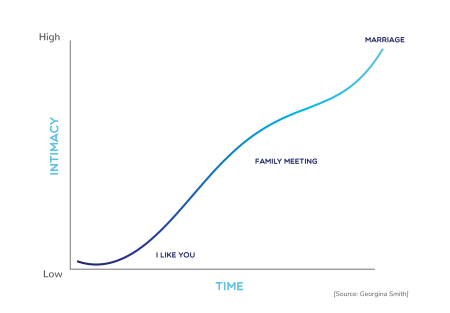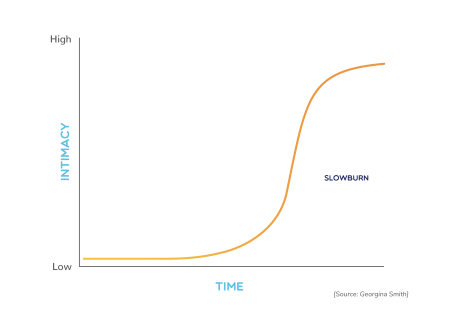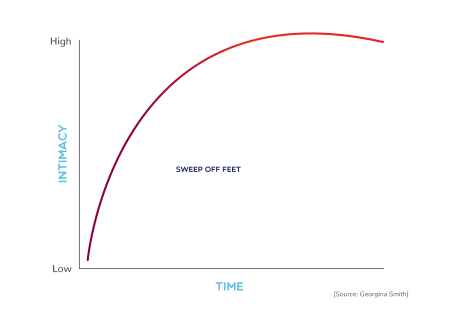six steps series
The Art of Selling: Introducing the Intimacy Curve

This article series is for anyone who finds themselves in the business of selling. That’s everyone, right? Selling has become a dirty word but it shouldn’t be. Every day we meet people, in whatever walk of life we find ourselves, and try to influence a situation or an opinion. We may not be aware that we’re trying to influence, but human nature has this amazing ability to unconsciously plan for the unforeseen and influencing is much easier when people like and respect you. So how do you read and connect with people well enough to know if they like and respect you? Let’s take a look.
This week we’re looking at understanding the intimacy curve and why it’s so important when understanding influence.
The intimacy curve is something I’ve developed and put into practise across many of the teams I have trained and led. It’s not from a book or podcast. It’s from my own observations of humans and how we behave around each other.
The intimacy curve looks like this:

What are we looking at? The y-axis shows the level of intimacy, and the x-axis indicates time. In theory, the longer we know someone, the more intimate we are with them.
This relationship is shown by the intimacy curve. The bottom of the curve indicates transactional conversations, when we talk about simple things like events and simple ideas, while the top of the curve represents conversations about values and common interests. It’s towards the top of the curve that connection and belonging happen. It’s where you feel comfortable in someone else’s company, and you can talk to them about anything without fear of judgement.
I want you to think of your last romantic relationship. If you’re married, not your spouse but the one before that. You probably met each other and there was an attraction and there was a bit of awkward (or maybe not so awkward) backward and forward while you decided whether you wanted to invest any more time here. Let’s assume you are.

All relationships have different intimacy curves, some can be slow burn relationships and look like this:

Others can sweep you off your feet and be freefalling and look like this:

There are certain milestones you reach when relationships move from one level to the next and these happen as you grow to like each other more and spend more time with each other, i.e. move up the intimacy curve. Then there are certain setbacks, like a row or a difference in values or future plans which may well push you down the intimacy curve.
Visualising the intimacy curve from a romantic perspective is pretty easy. We can all think of those relationships that never got past first base because you just couldn’t connect (or move up the intimacy curve) and we can all think of those relationships that quickly moved from initial conversations to something much more profound.
It’s no different in business but somehow, we often forget that we’re humans first and employees second. Humans need to connect and to connect we need to understand the intimacy curve and how we move up and down it.
Stay tuned for the next article, where we explore the intimacy curve and relationships.
Key Points:
- Selling has become stigmatized, but everyone engages in sales-related activities in their daily lives, whether they are aware of it or not.
- Understanding the intimacy curve is important for understanding influence in both personal and business relationships.
- The intimacy curve represents the level of intimacy in a relationship, with transactional conversations at the bottom and conversations about values and common interests at the top, where connection and belonging occur.
